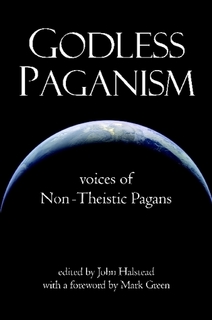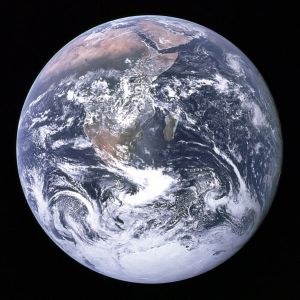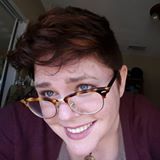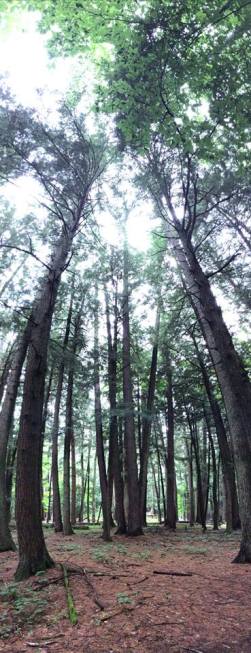Let’s face it. I am a very young pagan, both in terms of my own age (27) and the number of years I have self-consciously identified as such (one, very eventful, year).
Needless to say, I’ve spent this last year soaking up any and all things pagan. I’ve gone to Pagan Pride, participated in and let rituals throughout the Wheel of the Year with my ADF Grove, read dozens of articles and books, set up altars, made offerings, meditated, carved and burned my own set of runes, collected knick-knacks and paraphernalia, and let my normally skeptical mind entertain some truly unfamiliar ideas.
But as a full year rounds and I return to the season wherein I began, I find that my path forward looks very different than I expected it to. During this past year, I’ve waded into the modern pagan ocean with both the excitement and sincerity of an insider, and the critical tools, healthy skepticism, and moderation of a scholarly outsider. This latter approach has not been well received by all with whom I have come into contact. Some of my questions may have been too bluntly stated. I have not, perhaps, managed to equally balance both of my approaches as I’ve sought to probe some of the depths I am so keen to encounter. (Even if I’ve only just made it out of the shallows.)
While it may seem strange to others, for me, full encounter with any “depth” requires all my faculties – intuitive, emotive, critical, analytical, etc. In all honesty, I’ve never really separated these, or seen them as anything other than complementary. While others might exclude their critical lenses from their spiritual paths, perhaps out of a desire to preserve mystery, I cannot. Nor can I accept criticisms from others who suggest that my pagan path is less valid, or less sincere, as a consequence of this choice.
It might be the academic in me, but my first and most powerful impulse is to understand. Lots of problems – including the miscommunications that tend to land me in hot water – seem to be caused by a lack of shared terms, a difference in framework, or a mismatch between fundamental assumptions. And while I wouldn’t argue that “everything will be better if we all just got on the same page” (since that smacks of orthodoxy), I’ve found that assuming commonality where there is none can cause a great deal of frustration.
My year of pagan searching has been full of miscommunications, unfortunate assumptions, and misread intentions – on my part and on others’. Alongside the discomfort and frustration, however, I’ve learned a great deal about myself, and about the enormous variety of perspectives and approaches that fall under the label “pagan” – some of which are, quite frankly, inherently contradictory. This has pushed me to be ever more careful when using the term “pagan,” and to be aware of settings where critical conversations – pushing for clarity, examining implications, challenging assumptions – are inapprop riate or untimely. I’ve also learned that just understanding a disagreement, “framing the terms” correctly, does not inevitably lead to reconciliation or soothed feelings. This is my own bias, one I am trying to overcome.
riate or untimely. I’ve also learned that just understanding a disagreement, “framing the terms” correctly, does not inevitably lead to reconciliation or soothed feelings. This is my own bias, one I am trying to overcome.
I do see the critical lenses as essential to my own Naturalistic Pagan path. I am encouraged to find that the many authors at HP, and within Godless Paganism: Voices of Non-Theistic Pagans, seem to agree. Questioning, challenging, deconstructing, and engaging good scholarship will always be essential tools for those, like myself, who cannot accept a spiritual path that marginalizes our critical lenses. My own scholarship is predicated on the notion that such a division is unnecessary and even harmful.
One of my challenges, going forward, is to clarify for myself and others how important it is to put our critical discourses – the natural sciences, social sciences, history, logic, anthropology, etc. – into a dynamic and mutually transformative relationship with our spirituality, our sense of call, our deepest feelings of encounter and kinship with the World and Others. This relationship, this integration, cannot only be for the good of the individual, in order to guide their personal spiritual journey. It must also offer up a way of seeing, of navigating both our deepest and most mundane life experiences, that leads to more just communities and a healthier world. It must transform our ways of thinking about ourselves, the world, and the role of religion for us as Humanists who seek to cultivate a relationship with the world and all its Beings.
Non-Overlapping Magisteria? – With apologies to Stephen J. Gould

I don’t believe in Non-Overlapping Magisteria. NOMA is the view that science and religion speak about fundamentally different questions. “Bad Religion” tries to comment on what is within the scientific “magisterium,” and vice versa. This view follows the culturally-accepted paradigm that constructs religion as a “Not of this world” discourse; religion is devoted to a set of concerns about which science cannot speak. NOMA serves to neatly separate the two, to put them each in their own sandboxes and let them play by themselves, without interfering with each other’s operations, or claiming authority over each other’s sandboxes.
At first blush, NOMA seems to be a useful, perhaps even necessary, way of framing the situation. It certainly sets up safe-guards to prevent the kind of “boundary crossing” that we find objectionable; whether that’s Christians pushing Intelligent Design in classrooms or evolutionary biologists claiming that religions are irrational relics of a pre-scientific age and belong in museums. (I’m looking at you, Richard Dawkins.
But as I’ve taught the study of religion for undergraduates, I’ve found that this sharp division does more than prevent unfortunate and misguided crossovers; it can help crystalize a view of religion as inherently disconnected from scientific insights and approaches. This limits the way we are able to think and speak about religion in public and in private. It reinforces an ideological distinction between “nature” (the domain of science), and “culture,” (the domain of religion and myth). It polarizes “subjectivity” and “objectivity,” as if these were two distinct domains.
“Religion” comes then to speak only about the “supernatural,” since the “Natural” is the domain of science. This division, David Abram reminds us in The Spell of the Sensuous, can be traced back “to the modern, civilized assumption that the natural world is largely determinate and mechanical, and that that which is regarded as mysterious, powerful, and beyond human ken must therefore be of some other, nonphysical realm above nature, ‘supernatural’” (Abram 8).
Such a view precludes a kin-based, non-dualist understanding of human and non-human nature; a view which, I would argue, is widely held both among modern pagans and members of tribal cultures today.
French Anthropologist Philippe Descola’s foundational work, Beyond Nature and Culture, explores the way people from dozens of the world’s tribal cultures speak about and distinguish between what Western philosophy has deemed the separate realms of “nature” and “culture.” He finds, most importantly, that, overwhelmingly, they make no such distinction, at least not in the way we assume is “obvious” or “natural.” These distinctions are the products of a specific set of historical developments, from a particular region of the world, and thus have little to no “universal” utility as a way of talking about cross-cultural and trans-historical religions. They also lead to inaccurate, highly unfaithful interpretations of other people’s lives and practices, especially when it comes to so-called “magic.” Descola’s discussion of the indigenous Ecuadorian Achuar people’s practice of singing songs to the animals they hunt illustrates this point.
 Perhaps NOMA works for religions whose concerns are primarily “Not of this world.” But as a student of the history of religion and a Naturalistic Pagan, my view is that religion, at its core, is fundamentally about this world. In my last post, I mentioned Graham Harvey’s book, Food, Sex, and Strangers: Redefining Religion as Everyday Life. In Harvey’s anthropological view, religion can be viewed as a kind of “interspecies etiquette,” a way of negotiating between and among the Beings alongside whom we experience daily life.
Perhaps NOMA works for religions whose concerns are primarily “Not of this world.” But as a student of the history of religion and a Naturalistic Pagan, my view is that religion, at its core, is fundamentally about this world. In my last post, I mentioned Graham Harvey’s book, Food, Sex, and Strangers: Redefining Religion as Everyday Life. In Harvey’s anthropological view, religion can be viewed as a kind of “interspecies etiquette,” a way of negotiating between and among the Beings alongside whom we experience daily life.
If this, too, is religion, then certainly the natural and social sciences have insights to offer! The goal, of course, is not to trample on or dismiss non-empirically verifiable beliefs, but rather to expand the conversation, include multiple voices, and speak more broadly and inclusively about human and non-human life, with all of their intricacies. How could we possibly accomplish this without our critical tools?
Integrating the Critical Lenses
I see Humanistic and Naturalistic Paganism as inherently integrative. Our spirituality integrates not only ways of seeing the world – critical and spiritual – but also integrates us into the world. It is a spirituality that builds deep connections between and among all the Beings with whom we share our breathing, dancing, changing planet, whirling through space. If there is a set of tools that offers us insight into those lives with whom we share a deep kinship, from our fellow primates and mammals all the way back into the depths of the sea, then it is useful and essential to our spiritual path(s). We must heed what these tools teach us, whether the lesson is a humbling confirmation of the kinship of all life, or a startling reminder about the fragility of our ecosystems.
By doing so, we also (re)claim religion as a fundamentally human endeavor, one that helps us speak to the depths and heights of our experiences. We refuse to act as if religion is irrelevant to the greater conversation about the future of our species and planet, about systems of injustice. And while the scientific method must continue to operate according to its own rules, we refuse the stance that the critical, empirical tools of the sciences have no place in making sense of religious experience. The fear that scientific inquiry will “threaten” or “disenchant” religious beliefs is a powerful one, but I think it is one we must face squarely.
If religion is only about non-empirically verifiable experiences, and even the critical tools of the humanities – deconstruction, aesthetic and ethical criticism, etc. – are off the table, then religion is reduced to the space inside our skulls. The scope of religious life and thought shrinks down to a hyper-subjective sandbox, and our conversations become merely comparative, rather than mutually transformative. It ceases to be a conversation between ourselves and the world, and becomes merely self-referential, beholden only to our personal biases and drives toward wish-fulfillment. Religion becomes entirely about belief, and beliefs are entirely subjective, therefore not subject to evaluation or discussion.
So much of the content of human culture is built upon the enduring tendency of humans to talk about ourselves. Our lives are complicated, and we are burdened with pattern-seeking and meaning-making minds, so this is not unwarranted. But we also have the ability to listen to the world of which we are an integral part. We have the ability to apply reliable, proven tools as a safe-guard against our ego-serving tendencies. We have the ability to look beyond the surface of our experiences, to examine the root-system of our perceptions. Why should these abilities not be relevant to the religious quest to understand how we relate to the world around us? To the pagan desire for harmony with the world? Are we so certain of our own perceptions that we are ready to kick the insights of the sciences and critical disciplines out of our religion sandbox?
A scientist cannot tell me about the internal, subjective experience of the willow tree in my yard. But through empirical methods, she can tell me that the willow is able to convert sunlight into useable energy in a way that I will never be able to. How could I possibly build a relationship with the willow tree without this knowledge?
References
- Abram, David. The Spell of the Sensuous: Perception and Language in a More-than-Human World. New York: Pantheon Books, 1996.
- Descola, Philippe, and Janet Lloyd. Beyond nature and culture, 2013.
- Harvey, Graham. Food, Sex and Strangers: Understanding Religion as Everyday Life, 2013.
The original blog can be read here.
 Amelia “Émile” Wayne has studied the intersections of religion, history, and culture for eight years, and has spent the last two years teaching undergraduates in various Humanities courses as an adjunct professor. Émile’s personal spiritual quest flowed along lines of inquiry laid out by research, and eventually led them to seek out a form of religion which could counterbalance Émile’s tendency toward intellectual abstraction through a radical affirmation of lived experience. It was through participating in Ár nDraíocht Féin (ADF) style rituals that Émile came to embrace Paganism. Émile will be pursuing a PhD in Philosophy and Theology at Drew University in New Jersey from 2016-2019. Their goal is to construct a naturalistic pagan philosophy which engages Queer Theory, Process Philosophy, and Ecstatic Naturalism, while remaining firmly rooted in actual soil and actual lives. While not studying or teaching, Emile enjoys horseback riding, mystery dramas, and craft beer.
Amelia “Émile” Wayne has studied the intersections of religion, history, and culture for eight years, and has spent the last two years teaching undergraduates in various Humanities courses as an adjunct professor. Émile’s personal spiritual quest flowed along lines of inquiry laid out by research, and eventually led them to seek out a form of religion which could counterbalance Émile’s tendency toward intellectual abstraction through a radical affirmation of lived experience. It was through participating in Ár nDraíocht Féin (ADF) style rituals that Émile came to embrace Paganism. Émile will be pursuing a PhD in Philosophy and Theology at Drew University in New Jersey from 2016-2019. Their goal is to construct a naturalistic pagan philosophy which engages Queer Theory, Process Philosophy, and Ecstatic Naturalism, while remaining firmly rooted in actual soil and actual lives. While not studying or teaching, Emile enjoys horseback riding, mystery dramas, and craft beer.
Read Emile’s previous posts here.
 Naturalistic Paganism
Naturalistic Paganism



I feel much the same, though I could hardly express it so eloquently.
Good stuff!
I agree with the above comment–you have expressed these sentiments and thoughts far better than I could. As an Atheo-Pagan, I believe in finding the sacred in reality. The more I learn about the facts of our world, our reality, the less I need “magick.” This planet and everyone and everything on it is truly amazing, but I find that when the emphasis gets put on a deity or deities, the “amazingness” of our world gets lost or downplayed.
Your last paragraph prompts me to share something. My daughter is a biologist. She is just starting grad school and is sharing a residence with several other grad students. A plant in front of their house wasn’t looking very good; it was dull and droopy. So the biologists, being biologists, began to speculate on the nature of its malady: could it have a fungal infection, could it have a bacterial infection, or parasite, perhaps? The mother of one of the students came over, noticed the plant, and watered it. Biologists: Oh, water the plant. Right. They are not botanists, after all.
We all have different perspectives, even when we are grounded in reality, lol!
Awesome essay Emile! Loved this part especially:
“If religion is only about non-empirically verifiable experiences, [… then] the scope of religious life and thought shrinks down to a hyper-subjective sandbox, and our conversations become merely comparative, rather than mutually transformative. It ceases to be a conversation between ourselves and the world, and becomes merely self-referential, beholden only to our personal biases and drives toward wish-fulfillment.”
I’m going to be quoting that one a lot in the future.
Thanks John! I’m all about the radical concretization of religion. If religion isn’t a conversation about our common experience of the world (and our VERY different experiences of that same world, given privilege, power, etc.), then what IS it about? IMHO, the most radical question you can ask is: “Can you eat it?” So much of the conversation around religion is full of air; it neither fills nor nourishes!